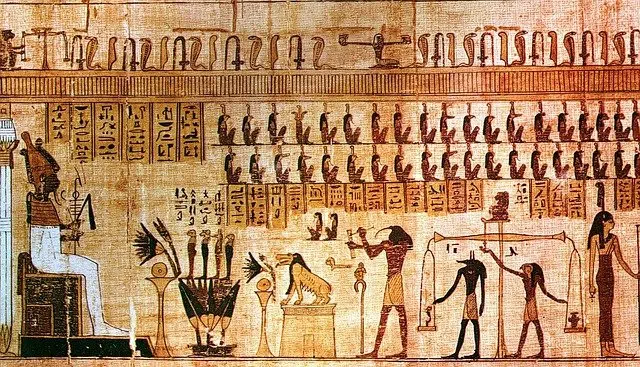
Cyperus papyrus is the scientific name of the plant known as papyrus.
Papyrus is a plant from the Cyperaceae family that has long, very narrow leaves and canes more than two meters high that end in a tuft of spikes with small, greenish flowers. This plant, whose scientific name is Cyperus papyrus , grows in the area of the Nile River in Egypt and in various places in the Mediterranean basin.
Typically, papyrus reproduces through its rhizomes . From them, at certain intervals, new trunks sprout. Wind-borne seeds can also promote multiplication, while some species of papyrus can reproduce by cuttings .
Papyrus as a writing medium
From the stem of the papyrus you can obtain a sheet that, in ancient times, was used to write on, as we currently use sheets of paper . This sheet and the manuscript created on its surface are also called papyrus.
Papyrus, therefore, is a writing medium . Its use was common in Ancient Egypt , especially in the people of the eastern basin of the Mediterranean Sea . With the fall of ancient Egyptian culture , papyrus lost ground to parchment. By the 11th century it fell into disuse and today only the ancient papyri are preserved for their historical and cultural value.
The creation of a papyrus required the stem of the plant to be soaked for one or two weeks. It was then cut into thin strips that were pressed with a roller to remove liquid substances. Finally, the sheets were pressed again so that the sap worked as an adhesive and they were rubbed with a shell or a piece of ivory for several days.

A papyrus is a sheet that was formerly used as a writing medium.
A controversial piece
In 2012, Karen L. King , a historian at Harvard Divinity School specialized in the beginnings of Christianity, discovered a piece of papyrus belonging to the 4th century in which an alleged wife of Jesus Christ is mentioned. The language used in the writing is Coptic , used in ancient Egypt. In April 2014, this finding was declared authentic by three prestigious universities: Columbia and Harvard, and MIT.
The controversial piece of papyrus is no larger than a credit card and is written in black ink on both sides, with eight lines on each side. For correct reading it was necessary to use a magnifying glass. Apparently, below the line in which Jesus' wife is mentioned, there is a clause suggesting that she could be his disciple .
King made his discovery public at an international conference held in Rome. It is worth mentioning that she is a historian with several published books and with the merit of being the first woman to hold the Hollis Chair of Divinity.
The analysis of the papyrus found by King
As an interesting fact, the origin of the piece of papyrus is not known , since it was found in a batch of papers belonging to a collector of Coptic, Arabic and Greek papyri, who asked that his identity not be revealed. From the first moment, King was open to the papyrus being examined by all those experts who wished to verify its authenticity, and two years later her name remains unimpeachable with the support of the aforementioned institutions.
As expected, the discovery caused a real commotion in the religious community, given that there is no official document that speaks of a love relationship between Jesus Christ or a disciple. On the other hand, given the struggle of women to receive the same treatment as men in today's society, a revelation of this nature could be very favorable to vindicate their rights .
